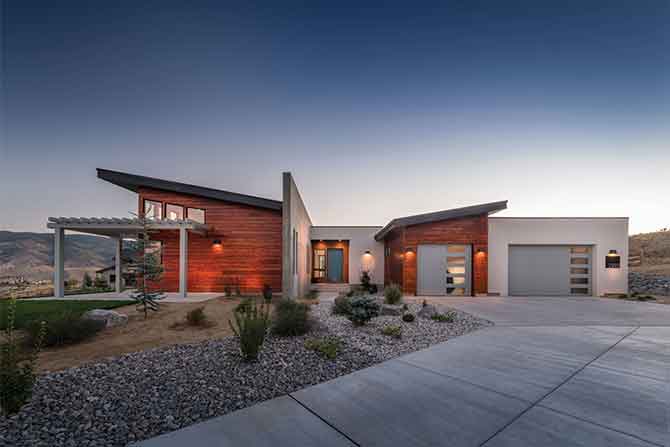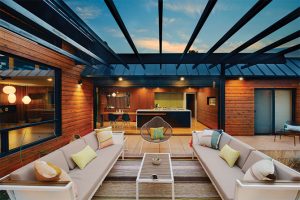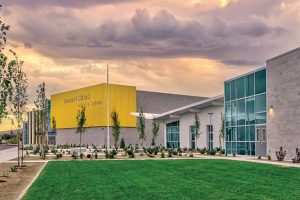By AIA Northern Nevada
MERIT
Architect: Architectural Design Group
Contractor: dfaltmann
Completion date: 2019
Location: Reno, Nevada
Overlooking the surrounding Sierra Nevada Range, the Spine Residence was designed to capture the site’s remarkable views, maximize solar collection, increase shade and shelter from the sun. The home is divided into two realms: public and private, separated by an exposed concrete spine wall.


Ninety-five-feet-long, sixteen-foot-tall and 1’-8” thick, the exposed concrete spine wall runs the residence’s entire length with punched openings used for passageways or windows. The spine wall protects the home from the harsh foothill climate while collecting solar heat in the winter and funneling the prevailing winds to help with ventilation in the summer. The wall leads through the entry, passing by punched openings that give glimpses of the interior, into the front entry, by the great room that opens up to the mountains’ views, and then continues to the back of the house to create a protected patio.
This project’s challenges were to create a contemporary design with a fixed construction budget in a gated community with a design review committee that is hesitant with contemporary architecture and does not allow exposed concrete. The design team had to write a letter to the design review committee to discuss the benefits and green aspects of exposed concrete. Remarkedly, in a building climate with sky-rocketing construction costs, the 3,000 square foot home was built under budget. This was partly due to the builder’s strong collaboration with the owners on the interior finish and fixture selections.


The longevity, sustainability and low maintenance of the building envelope were of high importance to the owners. The exterior was composed of stucco, cedar siding, and the concrete spine wall with this concept. Extensive modeling was utilized, allowing the design team to minimize heat gain and create well balanced daylighting throughout the home. Glazing was greatly reduced on the western and northern exposed walls, and instead, the home was directed to the south for maximum passive solar gain in the winter months. The “Venturi” effect along the spine and the placement of operable windows help cool the residence with the prevailing winds sweeping through the interior. LED lighting and high-efficiency appliances were used throughout to decrease energy consumption. Insulation was increased beyond energy compliance with impermeable roof insulation and continuous rigid around the exterior of the building envelope, establishing a very tightly sealed environment. Extensive hardscape, natural site material, decomposed granite and low water consuming plantings were implemented to complement the surrounding natural high desert landscape. Planning was also considered for future photovoltaic panels on the low-sloped roof areas.










